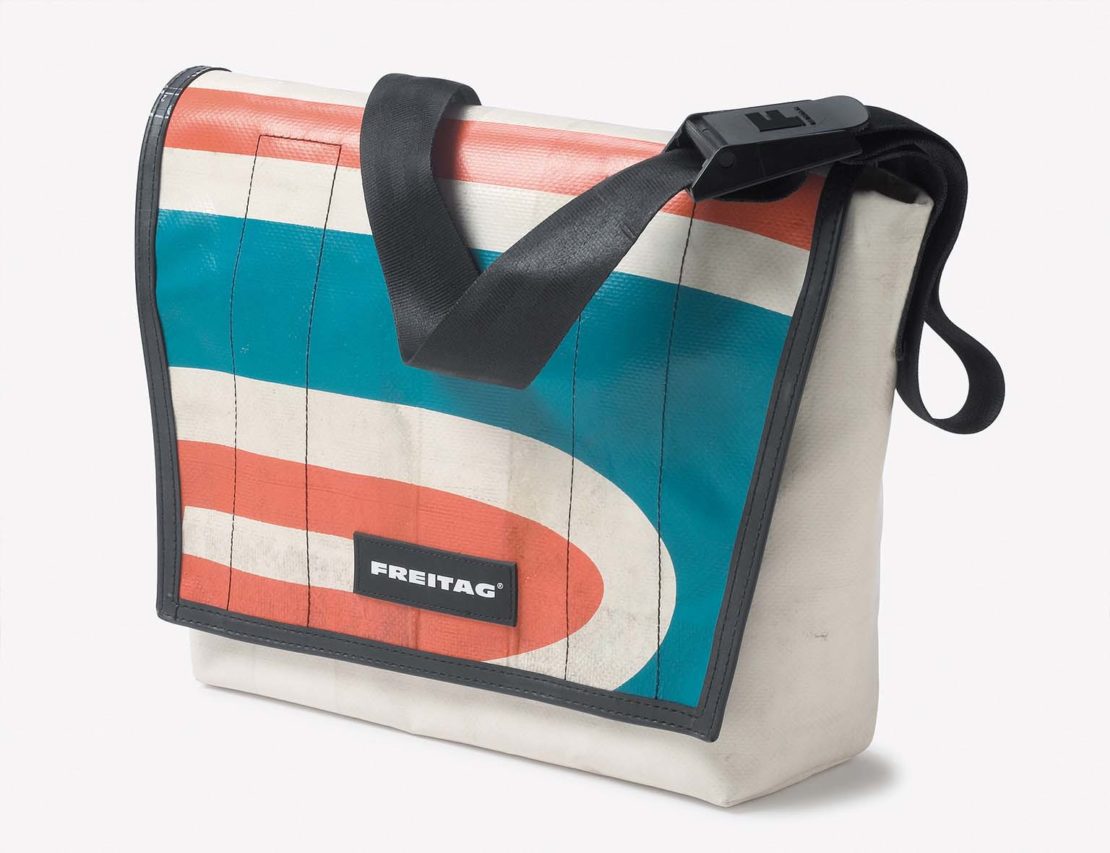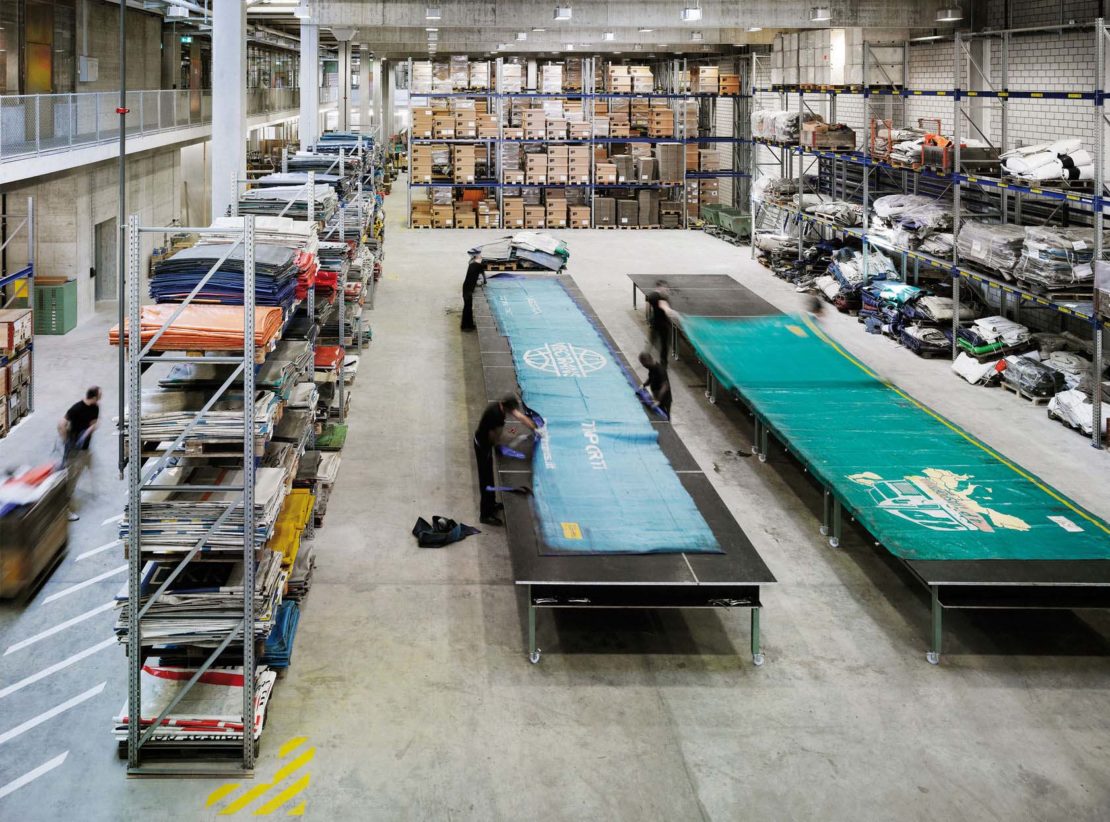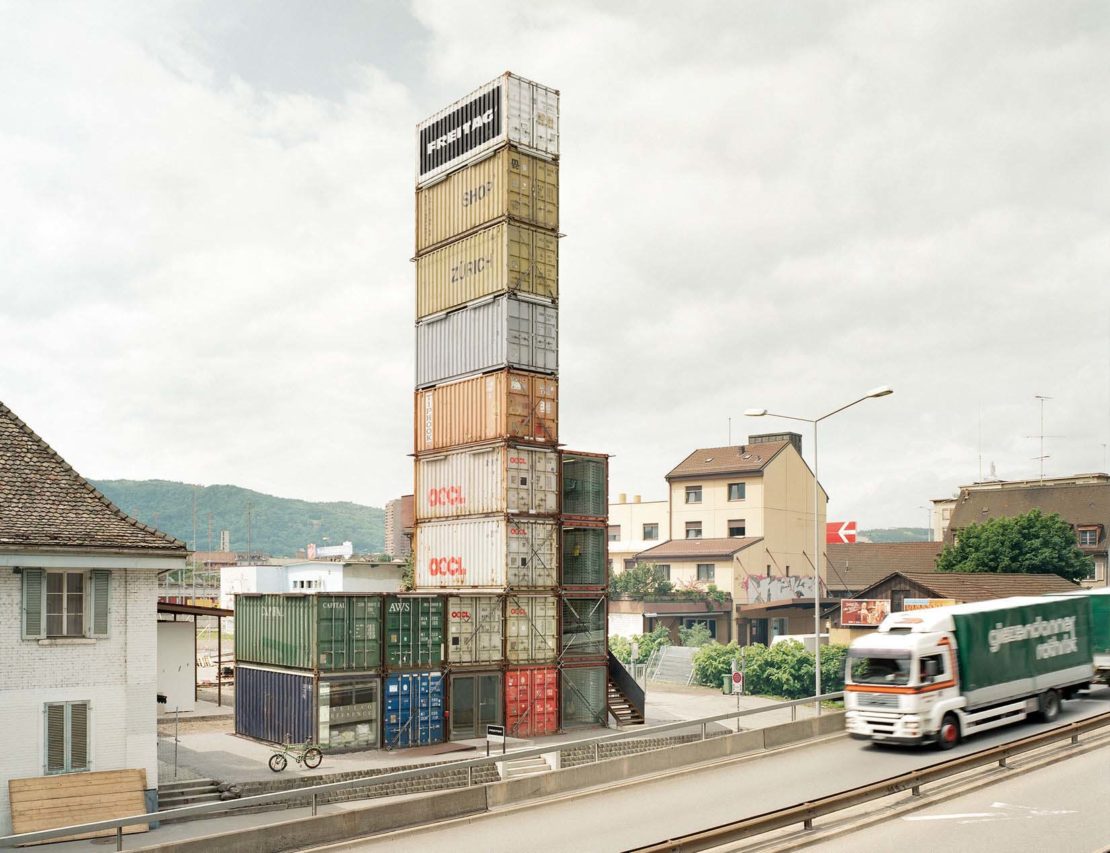From truck cast-offs to designer bags
Swiss bag maker Freitag built a global brand out of cast-off lorry parts. In 1993 the founding Freitag brothers, Markus and Daniel, realised tarpaulins for trucks were also perfect for the tough, waterproof material needed in functional cyclists’ messenger bags.
From the two designers washing tarps in their bathtub, Freitag has grown to 130 employees and ships 400,000 products each year out of its Zürich factory. From product to its flagship store, recycling – or what its founders call ‘recontextualising’ – is in its DNA.
The bag

440 tonnes of tarpaulins
It would be cheaper to buy new vinyl, but five full-time ‘truck hunters’ scour Europe’s lorry stops for tired tarps. Each is washed, dried and hand-cut.
35,000 bicycle inner tubes
Sourced from manufacturers’ ‘B-stock’ – oversupply or defects replete with holes – bicycle inner tubes are used for the seams around the edge of the bag.
288,000 car seatbelts
Seatbelts constitute the bags’ straps, and are sourced from car makers’ defects or oversupply – typically, straps of the wrong dimensions.
The factory

Freitag’s Nœrd factory occupies 7,500 square metres of a reclaimed industrial lot in Zürich. Laundering tarps is water-intensive (more than a million gallons a year), so they reuse rainwater collected from the roof (and partially heat it from the residual heat of previous washes). Half the building’s heating comes from waste power, the rest from hydro and solar. Given the high wages in Switzerland, it would certainly be cheaper to outsource production to almost anywhere else on earth, but Freitag are adamant about staying local and independent.
The flagship store

In 2006 Freitag built their main Zürich store between two of the city's biggest traffic arteries, in an area otherwise rendered a storage wasteland. They built a precarious 26-metre tower composed of 19 recycled shipping containers reclaimed from Hamburg, housing four sales floors and a viewing platform at the top. It’s one of the tallest buildings in the city.